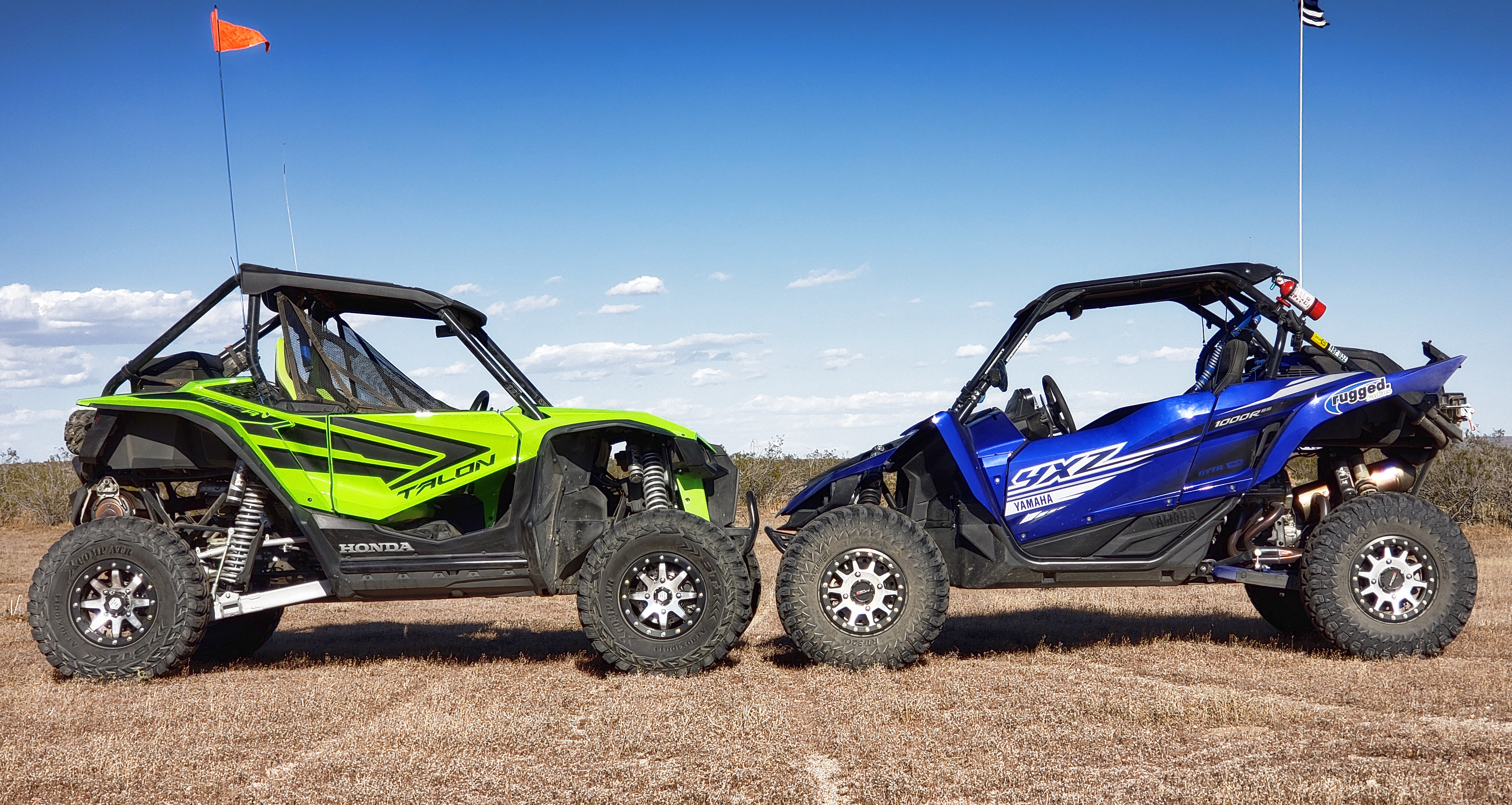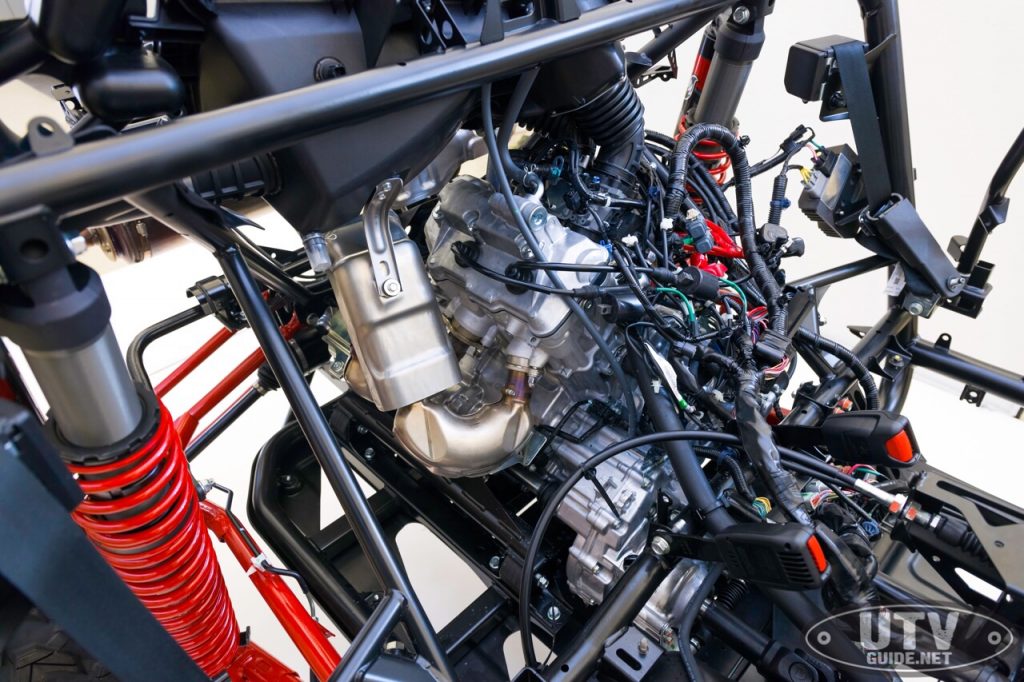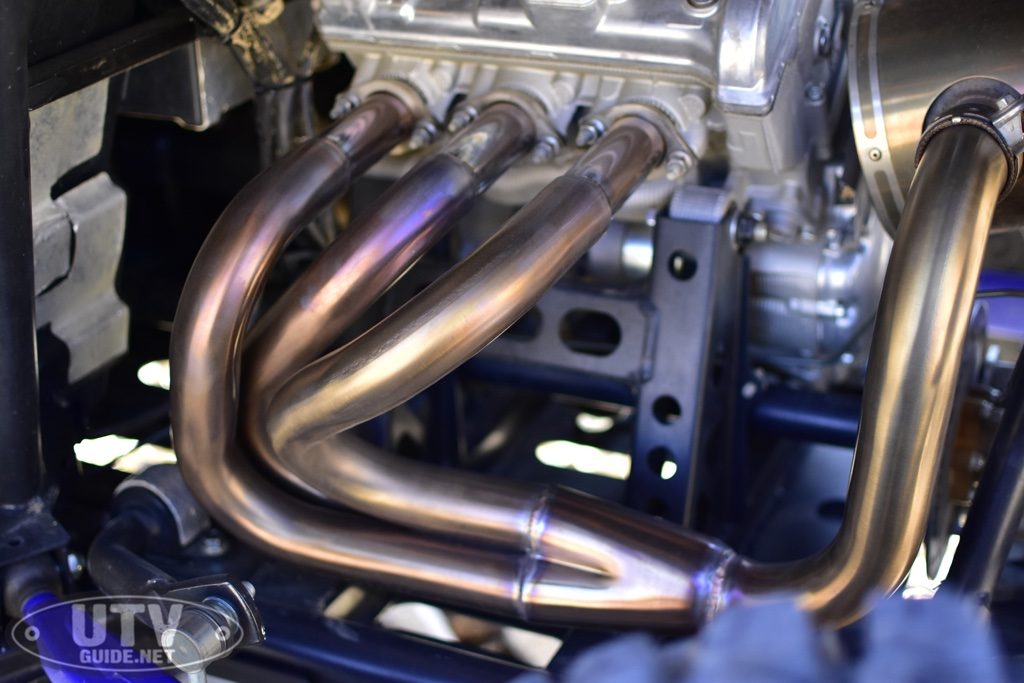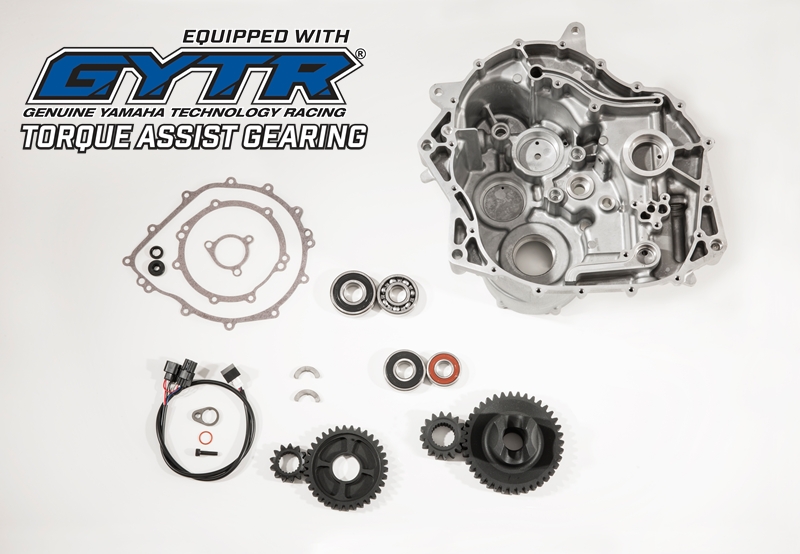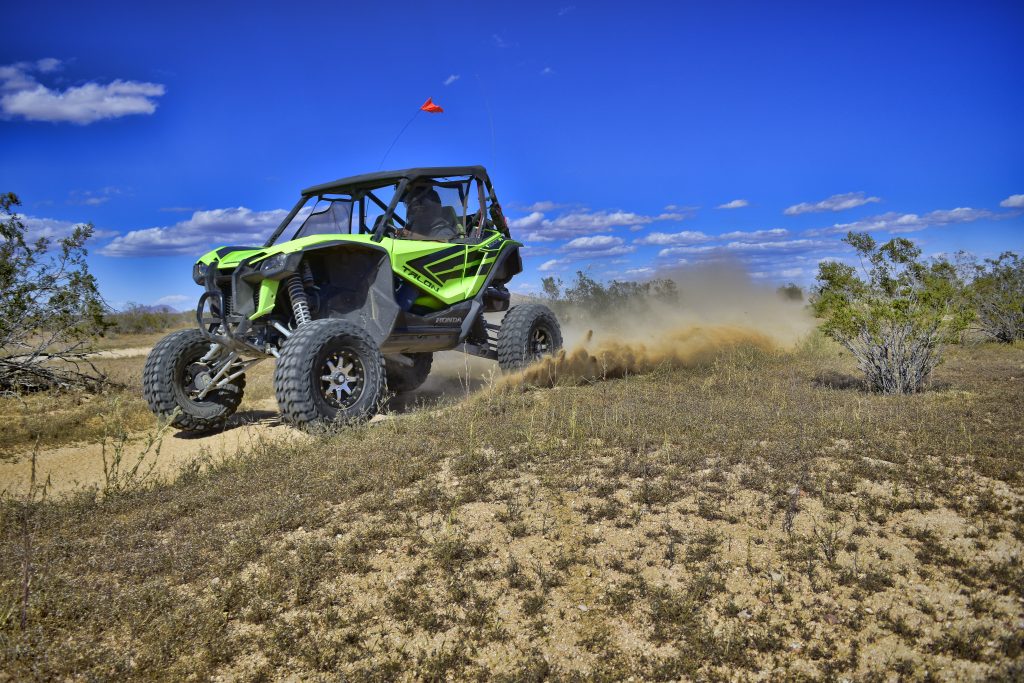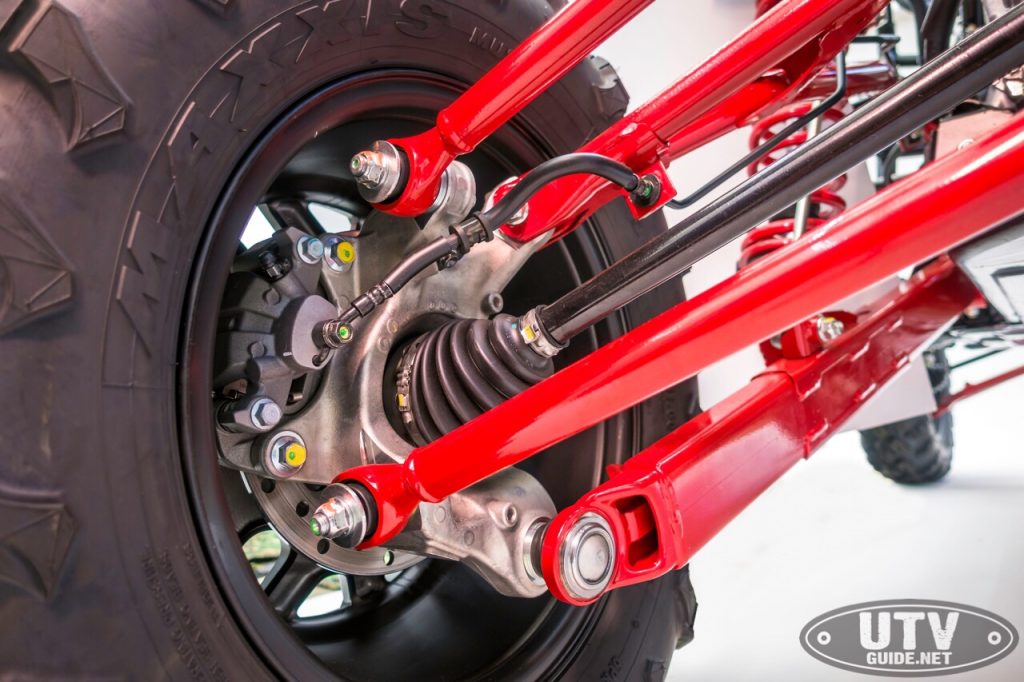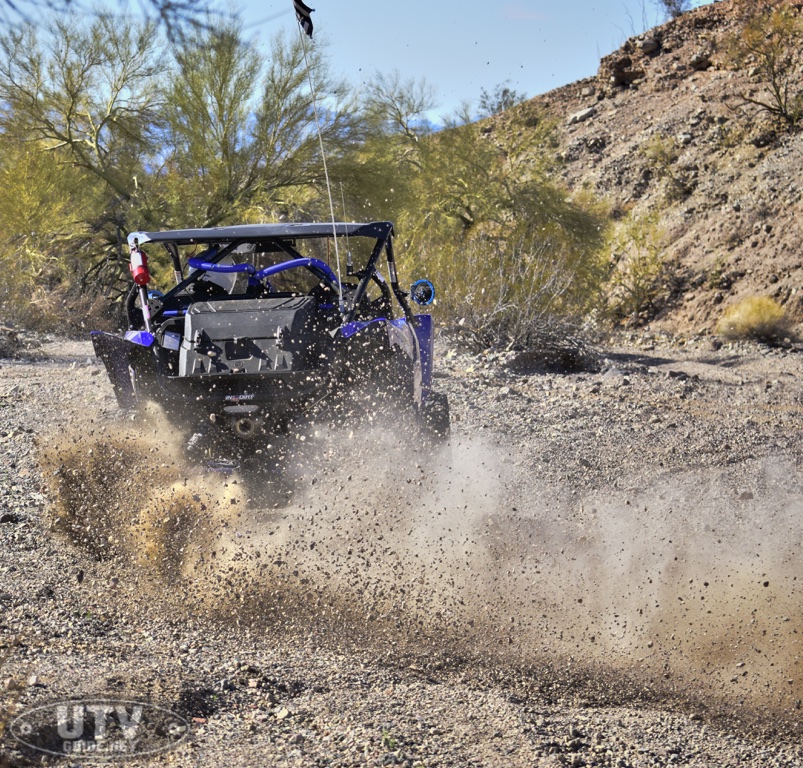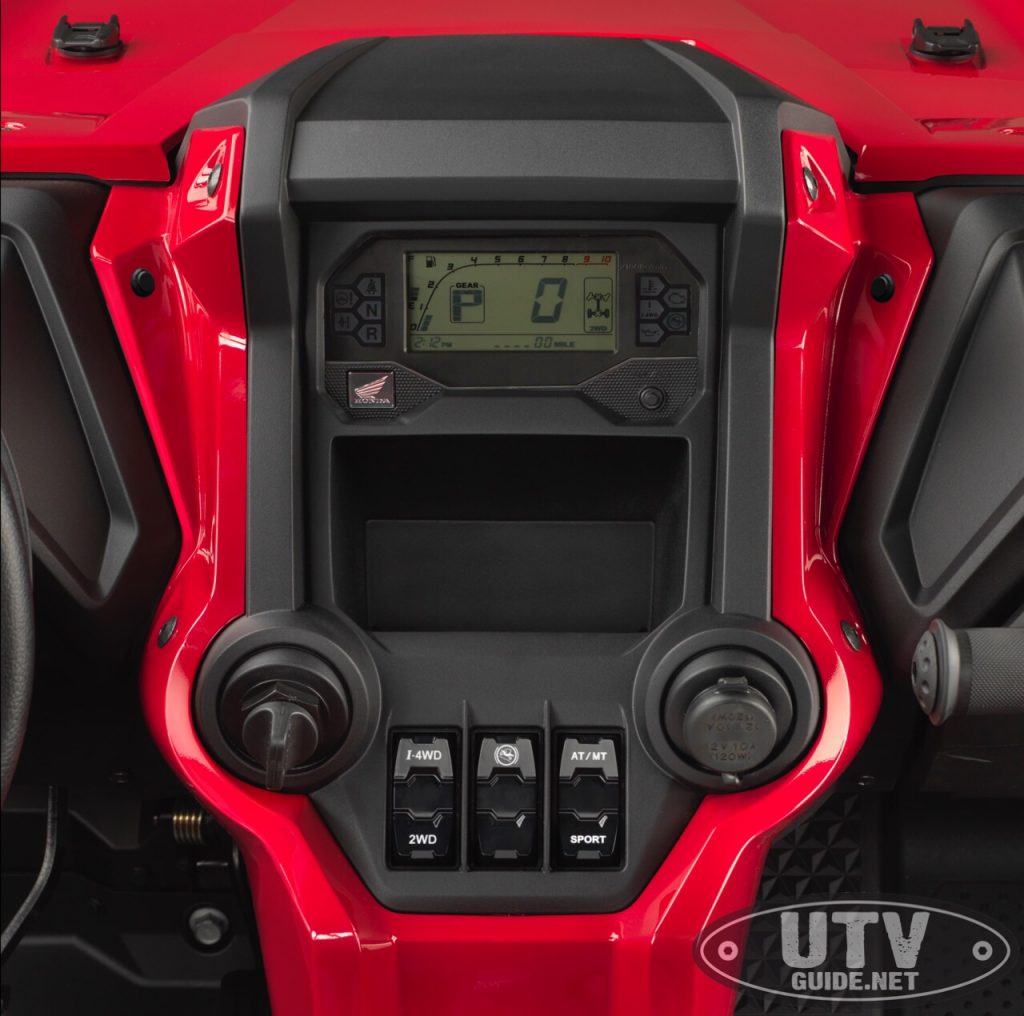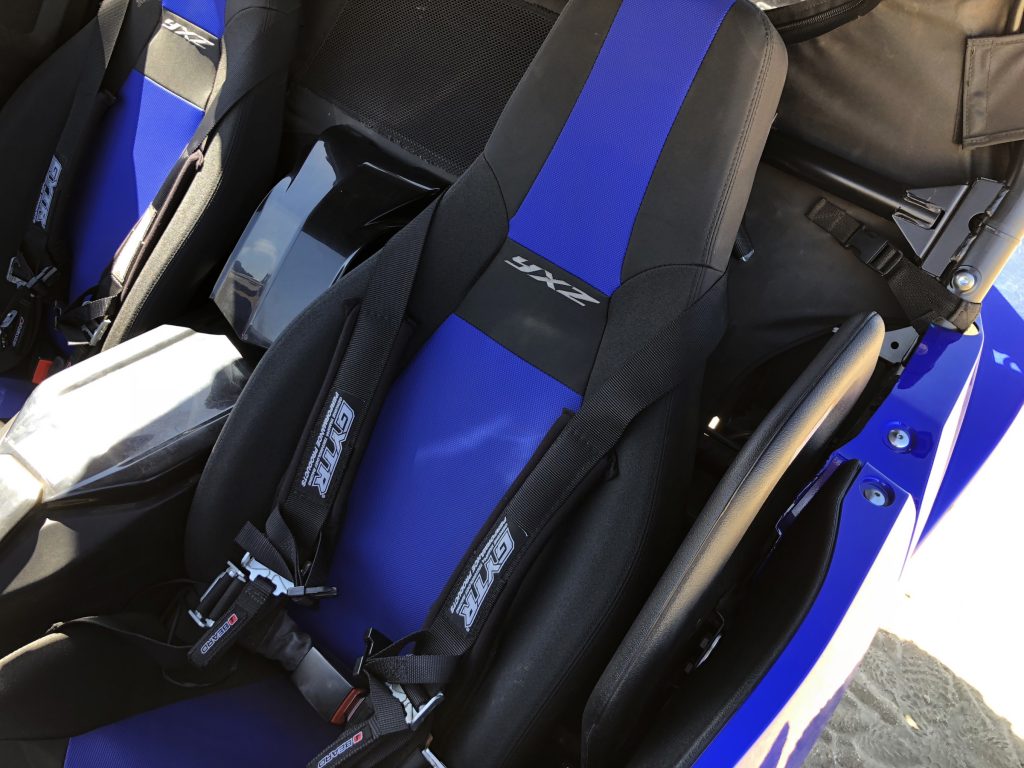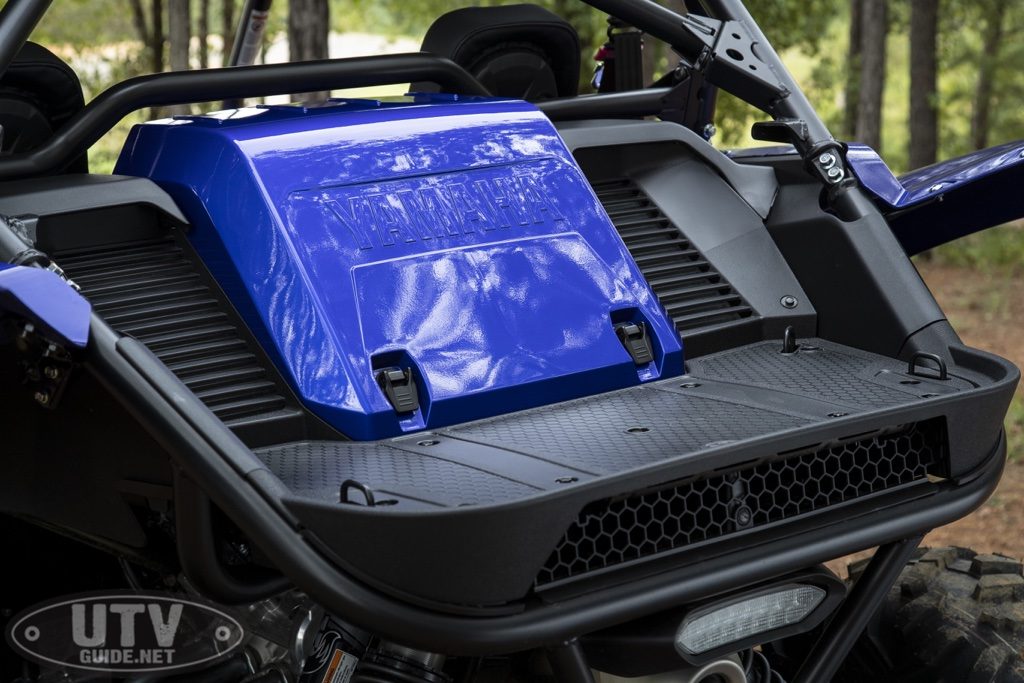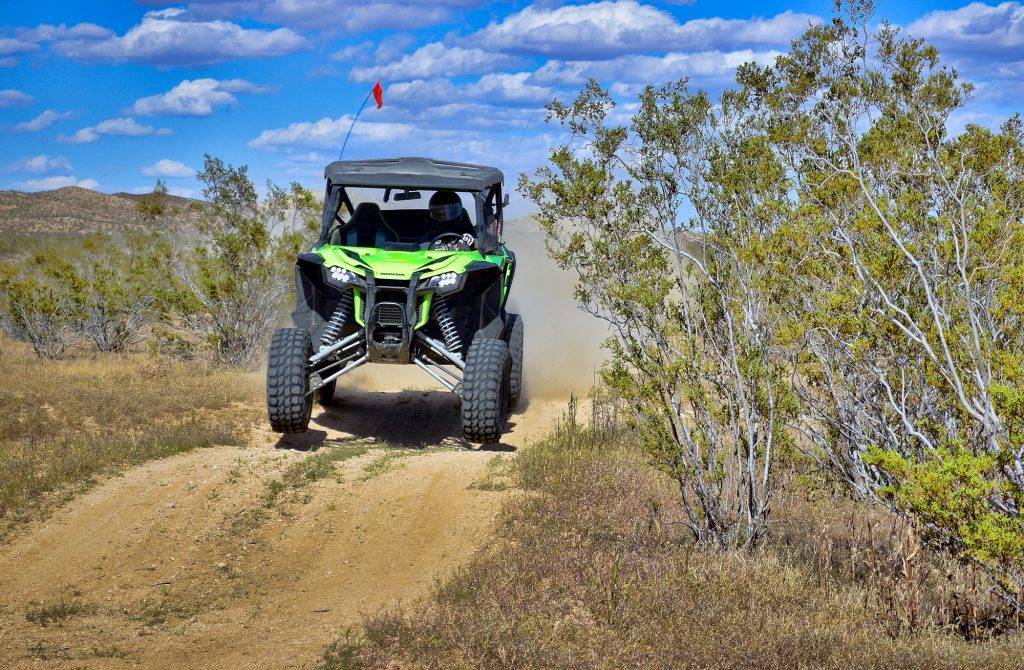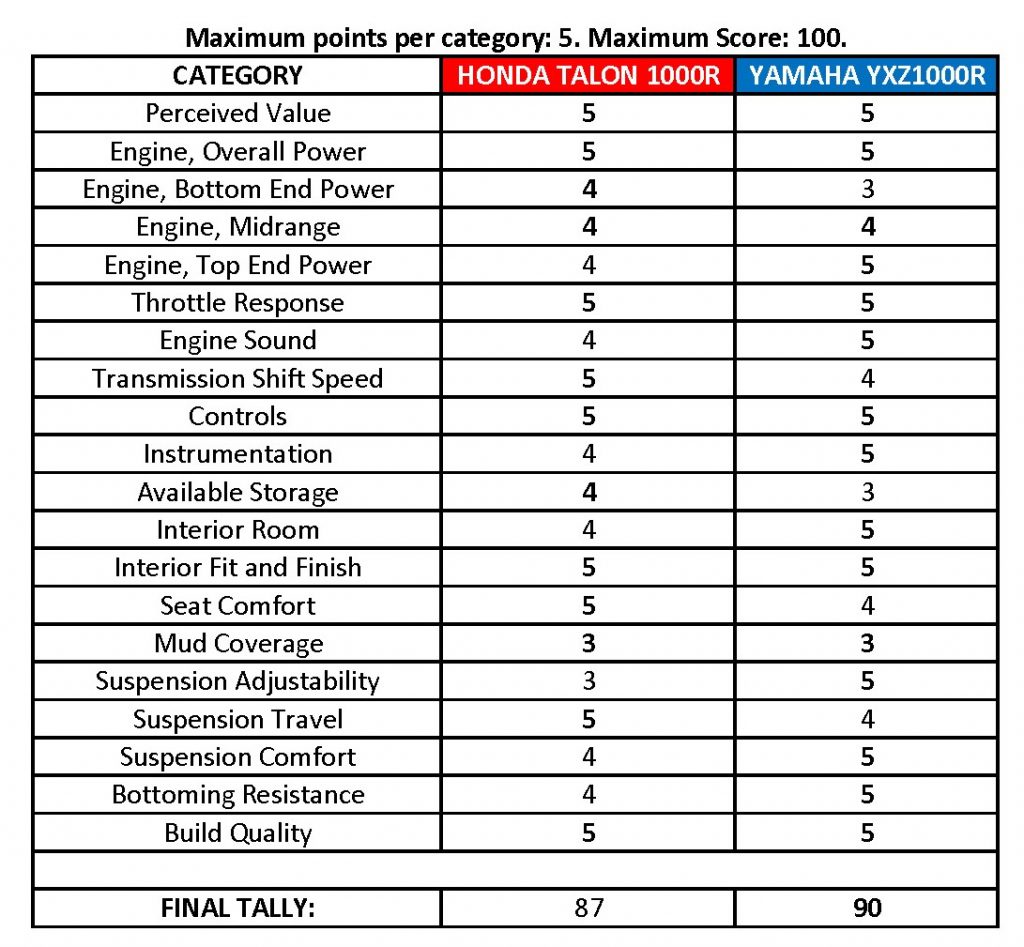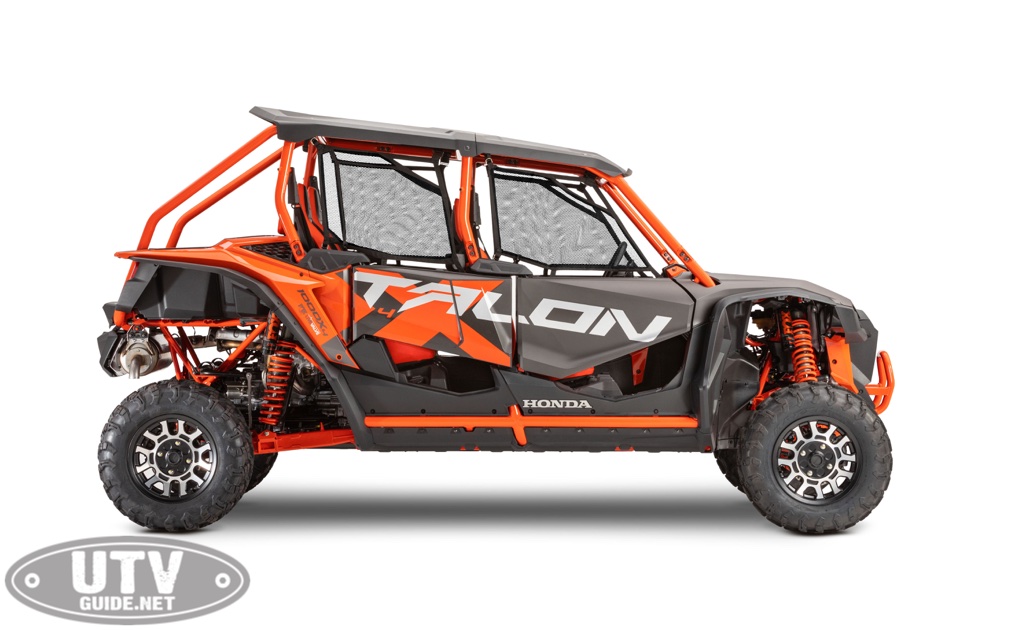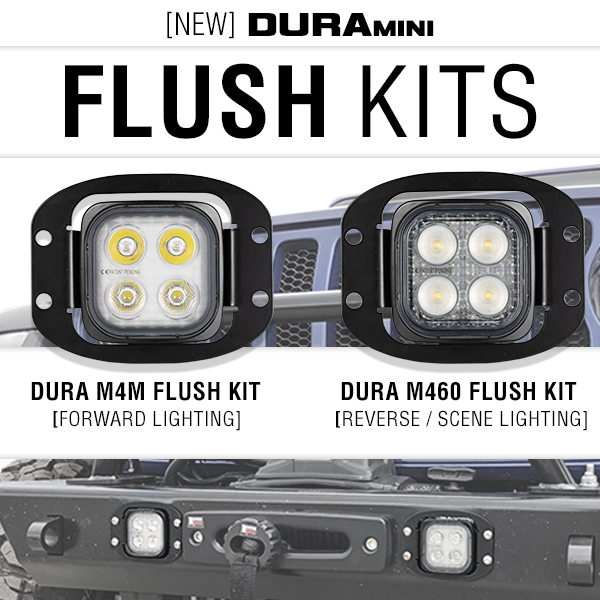By Cody Hooper
2019 is a big year for Japanese manufacturers. Honda released their very first sport UTV into the segment, Yamaha dropped their second generation YXZ, and Kawasaki is set to unveil their very first sport unit this October. Since the YXZ1000R and Talon 1000R are the only two non-CVT equipped sport UTVs on the market today (from a large manufacturer), we gathered up two units for a little showdown. Buckle up!
THE STAGE
Final day of testing for the shootout. California City, California. We arrive during a sunny weekday afternoon, YXZ and Talon in tow. We’ve got stock wheel and tire combos as well as 30” STI and System 3 upgraded rubber for both machines. Four loops are used for testing, ranging from 1.4 to 80.6 miles. Three drivers [ages 25-56] are present for testing. Both machines are privately owned, and are not manufacturer loan units.
It’s been a while since we have pitted a Honda UTV against a Yamaha UTV for a comparison, and it’s the first time we’ve had sport machines from these manufacturers lined up next to each other. The Honda sits tall on its new 30” STI Enduro tires, its fantastic lime green metallic paint sparkling in the California sun. Yamaha’s venerable YXZ1000R is looking the best it ever has, with its revised roof profile and updated bodywork. This is going to be good.
ENGINES
These engines accomplish very near the same net effect, but in very different ways. The Talon employs a parallel-twin single overhead cam engine. Loosely based on the Honda Africa Twin motorcycle engine, it makes around 85 wheel horsepower, and 104-ish at the crank. The Talon’s engine is rubber mounted and produces very little vibration. It sounds great at idle and even better while banging through its 6 forward gears. Throttle response is snappy and crisp, and the engine spins to life freely without feeling plugged up. It revs to 9,000 RPM and makes power all the way up until it hits its rev limiter. Torque is smooth and plentiful, coming on around 3750 RPM.
Yamaha’s YXZ engine is also loosely based on a stablemate’s, albeit from Yamaha’s snowmobile segment. It employs dual overhead camshafts to open four valves per cylinder, twelve in total. Yamaha’s inline triple-cylinder engine is raucous, angry, and has very long legs. The YXZ feels more plugged up than the Honda, but an aftermarket pipe and tune remedies that very easily. The Yamaha attacks acceleration differently than the Honda, signing off on low-end power until about 4,500 RPM. Between 7,000 and its 10,500 RPM rev limit, the YXZ is in its sweet spot.
From the first time you snap the throttle in either machine, it’s evident that they make power very differently. The Talon’s parallel twin feels lighter and snappier, more akin to a dirt bike engine than the Yamaha’s weighty buzzsaw of a triple. The Talon makes big torque down low and puts it down with seemingly zero drama or wheelspin, especially in four-wheel drive.
Traction gets even better with the 30” STI Enduro XTS tires, and the Honda is seemingly unphased by the jump to a much larger tire size. The Honda doesn’t make a ton of peak power, but it makes good power and torque seemingly everywhere in its rev range. It pulls strong and has enough torque to comfortably cruise around the trails in the higher gears. The sound of the Honda is very unique. It has a bass-rich tone that sounds really crisp at high RPM.
The Yamaha is on the opposite end of the spectrum. It starts making power later than the Honda, but will still chug along down low thanks to its extra rotational inertia supplied by its third cylinder. It puts down a steady swell of torque that really starts to grow when the needle ticks past 7,000 RPM. By the time the Honda is signing off, the YXZ has nearly 2,000 RPM left until it hits its limiter. Its sound is intoxicating, always inviting you to wring the last bit of power out of it as the programmable shift light tells you it’s time to squeeze your right hand.
DRIVETRAIN
Neither machine present uses a belt-drive transmission. Both use manually shifted transmissions with computer-controlled and actuated clutches. The Honda has automated shift modes; the Yamaha does not. Both shift via column-mounted paddles, with center console mounted gear levers for Drive, Neutral, and Reverse. The Honda has Low Range and Park, the Yamaha does not. The Yamaha comes standard with a driveline-mounted parking brake that uses its own disc and caliper.
Honda’s Talon 1000R uses a dual clutch 6 speed transmission, which shares technology with many high-end sports cars. Dual clutch transmissions use two parallel gear shafts with separate clutch packs. One shaft will hold the odd gears- 1, 3, 5. The opposing shaft holds the even gears- 2, 4, 6. While first is engaged, the next gear is also engaged on the opposite shaft. Changing from gear 1 to gear 2 only requires closing one clutch pack and opening another. It is a synchronized transmission that pulls off very smooth shifts. It’s all very… automotive.
Then there’s the YXZ. This machine was clearly developed by a company who has spent a lot of time perfecting motorcycle transmissions. The YXZ’s sequential-manual 5 speed transmission is not joined to the engine as in the Honda, but rather connected by a short drive shaft. It works just like a motorcycle transmission as well, using parallel shafts and dog clutches. Yamaha has fitted the manual transmission with an ECU, allowing it to shift via paddles and engage/disengage its clutch using some very tricky algorithms. For 2019, the gearing was lowered, the driveline beefed up, and the transmission ECU received new programming. It’s spot-on, cracking off smooth starts and rapid-fire shifts.
Yamaha’s high-strung inline triple makes wondrous noises when you grab the + paddle at wide open throttle. Full-throttle upshifts are brought to you by an intelligent ECU that cuts spark during the shift so parts don’t exit the side of the transmission at full power turning well over 10,000 RPM. A secondary driveline clutch in the Yamaha’s transmission helps smooth out impact and driveline lash, and it is built like a tank.
Yamaha was confident enough with their driveline strength that they programmed in a launch control mode that doesn’t restrict launch RPM. Click it in 4WD, rev the piss out of it, and let go of the paddles. The YXZ does a step-off clutch drop for you that sends you rocketing away from a dead stop in a hurry. This transmission is better calibrated in terms of gear ratio and ECU programming for 2019. Low-speed clutch engagement is great, and the transmission will never perform an un-commanded upshift. It is a perfect pairing for the Yamaha’s power curve. If we could change one thing, it would be to add another gear.
Honda’s DCT is a great example of clever engineering and fine tuning coming together. It’s the only machine of its kind in the segment, having the ability to perform fully automated shifting. What is even more impressive is how it’s calibrated though- the Honda shifts with the same precision and smoothness as a new sports car. Its ECU does a good job of learning your driving habits to predict shifts in a manner that will suit your driving style. Within minutes of driving, it was seemingly thinking with us.
It’s great fun to listen to as well, cracking and popping under manual shifts like a German sports car. Most of the time we drove, we left the Honda in its Sport Auto setting. The machine is programmed to react very quickly to throttle and brake applications, firing off rapid gear changes that never have you waiting for power. The Honda Talon’s transmission technology is seriously impressive and offers the highest level of refinement you’ll find in the UTV industry.
The Honda also has a Joker up its sleeve, as it features a dual range transmission. Its low gear offers a mild 40% gear reduction. While the gear reduction could be lower for intense crawling, the Talon is surprisingly nimble and a very adept climber. Its i-4WD system uses clever electronic sensor wizardry to control power at each wheel when climbing. We posted a video on our Instagram here of a Talon using only its driver’s front wheel to climb a 45 degree slope. Pretty neat stuff.
The Yamaha hits its limiter in the low 70 mph range, the Honda just a couple ticks higher. In a recent run in an Alba tuned YXZ1000R SS on 30” tires, it hit a GPS-indicated 89 MPH on the rev limiter in 5th. We haven’t had a chance to tune the Talon yet, but we suspect similar top speed results.
SUSPENSION & WHEEL END
A great motor can be completely hindered by a lackluster suspension. Thankfully, neither of these machines are lacking in that department. Again, they both use very different methods to achieve very similar results.
Honda fit the Talon with a dual A-arm front suspension, the industry standard. The arms are long, thin, and look very stout. Aluminum knuckles and large twin-piston calipers fit in a standard 15” wheel. Motion is controlled by a set of Fox 2.5” diameter Podium QS3 shocks. These use an easy three way compression adjuster, leaving Honda plenty of room to offer upgraded shocks in the future.
Out back, they designed what they call a 4 + link rear suspension. It combines a trailing arm, a massive A-arm, and two radius rods to create the most complex rear suspension setup out there. The good news is that it works, and the Honda feels very planted at speed. The Fox QS3 shocks are valved very well stock, but they lack a little in bottoming resistance and compression damping in the absolute hardest of hits. It floats over whoops and rough terrain with a very tight, refined feeling.
Travel numbers for the Honda Talon 1000R come in at 17.7 inches front and 20.1 rear, essentially making it a factory long-travel car. These travel numbers slot nicely between the YXZ and a RZR Turbo S or Can-Am Maverick X3 X RS, showing that Honda clearly came to play.
There are no squeaks, rattles, or clacking in the drivetrain. The Honda’s suspension is extremely well-tuned for a variety of terrains, and the adjustments made to the compression damping with the QS3 quick adjuster are easily felt behind the wheel. Braking comes on strong, but there is a lot of pedal travel. Spending time behind the wheel of the Talon makes it apparent that the computers that control this vehicle’s systems are always hard at work, making sure the power gets put to the ground properly and efficiently.
As far as hardware goes, the YXZ is not entirely dissimilar to the Talon. Dual A-arm front and rear suspension keep the YXZ’s wheels pointed dead ahead regardless of where they are in the travel. Yamaha did a lot of homework with the second-gen YXZ, moving a lot of its weight rearward by moving the entire cooling system from the front to the rear. There is now a large gaping hole where the radiator used to be, and it sits behind the seats with dual 30-amp fans to keep it cool. Yamaha claims massive cooling increases for the engine and the passengers, and we are here to tell you they’ve accomplished their goals.
The YXZ is set up far differently than the Honda. It sits lower in its travel, and also features less of it. With the YXZ, you get 16.2 inches of front wheel travel and 17.0 in the back. On paper, this may look like a deficit, but you quickly forget you’re not in a long-travel car thanks to the Yamaha’s incredible shock tuning. Yamaha engineers flipped their shock tuning program on its head for the 2019 model year, going from a heavy spring/light damper to a light spring/heavy damper setup. It worked wonders for the YXZ’s composure, as this 2019 car simply irons out anything in front of you at wide open throttle.
The YXZ also received upgraded brakes for 2019, with larger rotors, a bigger-bore master cylinder, and a larger hub. The new hubs use a 4/156 wheel pattern, dramatically increasing the amount of wheel fitment options for the aftermarket. Since the wheel pattern is now the same as the RZR, you can also find wheels in stock at nearly any dealership that will fit if you end up hurting one on the trail. The brakes on the 2019 car are phenomenal, requiring very little pedal pressure to scrub speed and never exhibiting a hint of fade.
INTERIOR, BUILD QUALITY & COMFORT
Honda’s Talon 1000R has a great set of stock seats, and the interior is pure Honda. All of the switchgear and contact points are top-notch, but the YXZ doesn’t give anything up in this category either. The YXZ has one of the coolest instrument panels around, with a swinging analog tachometer and programmable shift light pointed right at the driver’s face.
Both the Talon 1000R and YXZ1000R are as tight as a drum when it comes to build quality. High-end fasteners are used throughout, with great panel fitment and a real attention to detail that you notice most when wrenching on your machine. Yamaha’s hardware is second to none, with an abundance of stainless and plated bolts. The redesigned cage profile on the 2019 YXZ looks much sportier than the Talon’s, but the Honda has a beefy cage setup that really gives you a safe feeling when bucked into the seats.
The seating positions between the two cars are fairly similar, but you sit quite a bit lower in the Yamaha. Both units have decent stock seats, but both also benefit from a good set of aftermarket bucket seats and harnesses. Full doors are a blessing on the YXZ, as we filled the floorboards of the Talon with rocks and dirt that were launched through the opening below the half door. Honda will sell you a lower door kit, but it’s pricey. At this performance level, all sport UTVs should come with a full door.
The Yamaha’s interior bits where your knees make contact are all soft surfaces, and there is an amazing amount of leg and shoulder room in the YXZ. The Talon will feel more cramped to taller drivers, but not so much that it detracts from the driving experience. The Honda’s factory window nets are great, and they don’t get in the way while driving. Honda’s stock headlight performance also puts the Yamaha’s to shame.
STORAGE
Both of these machines are lacking in the storage compartment, with small gloveboxes and rear beds. The Honda’s center console cupholders are better than the YXZ’s, which exist in the passenger’s side floorboard. The Talon’s bed is slightly larger than the 2019 Yamaha’s, but it still isn’t large enough to lay a stock-size tire down without it hanging over the lip. Luckily, both Honda and Yamaha (along with countless aftermarket companies) make storage upgrades for these cars.
THE DRIVE
We have spent hundreds of miles in both machines, having driven the 2019 models in a few different locations. In our acceleration testing, both cars are nearly a dead match stock for stock. Even with the YXZ’s launch control engaged, it only puts about a half car on the Talon out of the gate, which is a testament to Honda’s transmission tuning. Both cars pull well for naturally-aspirated 1000cc machines, but the Yamaha does it with more thrills.
Our desert testing of these two machines led us over 200 miles of beaten, scarred terrain. A harsh winter left the desert littered with rain ruts, washouts, and big holes. Neither machine seemed to care. The shock tuning on the YXZ is better without a doubt, keeping the wheels firmly planted into the terra firma and allowing the Yamaha to put its power down regardless of how choppy the trail is. This car is a vast departure in feel from older YXZ models, adding a layer of refinement to Yamaha’s recipe that really shines behind the wheel.
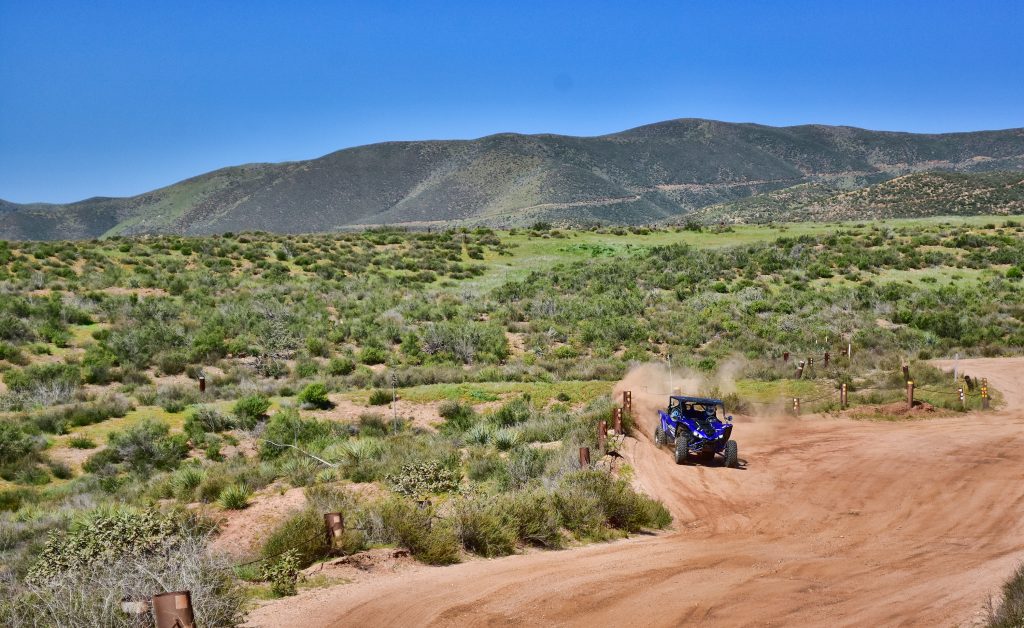
The best thing about the YXZ is how it handles, and it will make you hang the back end out every chance you get.
Take that with a grain of salt, as the Talon is no slouch. Good baseline shock tuning and a ton of wheel travel let the Talon float over nasty whoops, rocks, ruts, and trail debris. It is an extremely easy car to drive fast, and the car does most of the work for you. Even though it isn’t equipped with a CVT, it drives more like a RZR than a YXZ. The feeling is less visceral than the Yamaha, but is a fantastic experience that left every driver smiling.
Both cars were able to attack the normal whoop sections in our test loops wide open without feeling out of control. Where the Yamaha started to pull ahead was in switchback sections with whoops thrown in mid-corner. The weight balance of the YXZ paired with its near-perfect shock tune allowed it to be driven wide open in curving whoop sections, where we had to lift occasionally in the Talon. Either car will skim over 2-3 foot whoops at 65+ if you’ve got the guts to do it.
Cornering is where the differences start to show. The Honda sits taller than the Yamaha and has more suspension travel, and is also not equipped with a front swaybar (the YXZ is). Body roll is more plentiful in the Honda, but it strikes a great balance. Turn in, and you get an initial lean. It finds its sticking point and carves a turn with authority, leaning just enough to weight the tires on the outside. The YXZ, on the other hand, is the best-turning UTV you can buy today.
While the early YXZs initially took hits with testers for its slower steering ratio, it was revered by those who drove the 2019. This YXZ seems to be on rails, and steers nearly telepathically. On tight, twisty trails, driving the Yamaha at a fast pace is downright easy. The car pivots on its center and grips with some sort of super-natural force, allowing you to steer by twitching your hands and throttle foot rather than cranking on it. Moving the cooling system rearward balanced the car so well that we had to pry a couple of testers out of it. It’s rewarding to drive fast, and you’ll beg for more corners on every trail you ride- it’s that much fun.
The Honda requires less effort to drive quickly, especially when left in Auto mode. Stab the skinny pedal, and it drops a gear (or two) and rockets off. With the Yamaha, the gear selection is left to the driver, so if you come out of a corner on the rev limiter, it won’t grab an upshift for you. Ever. It will downshift itself on braking and while climbing if the gear selected is too high for the conditions just to save the clutch, but it won’t auto downshift to the optimal gear on corner entry. That’s your job, and it’s a very rewarding one. Yamaha gets the nod for aluminum paddle shifters vs the Honda’s plastic units, but both are column-mounted and very easily accessible.
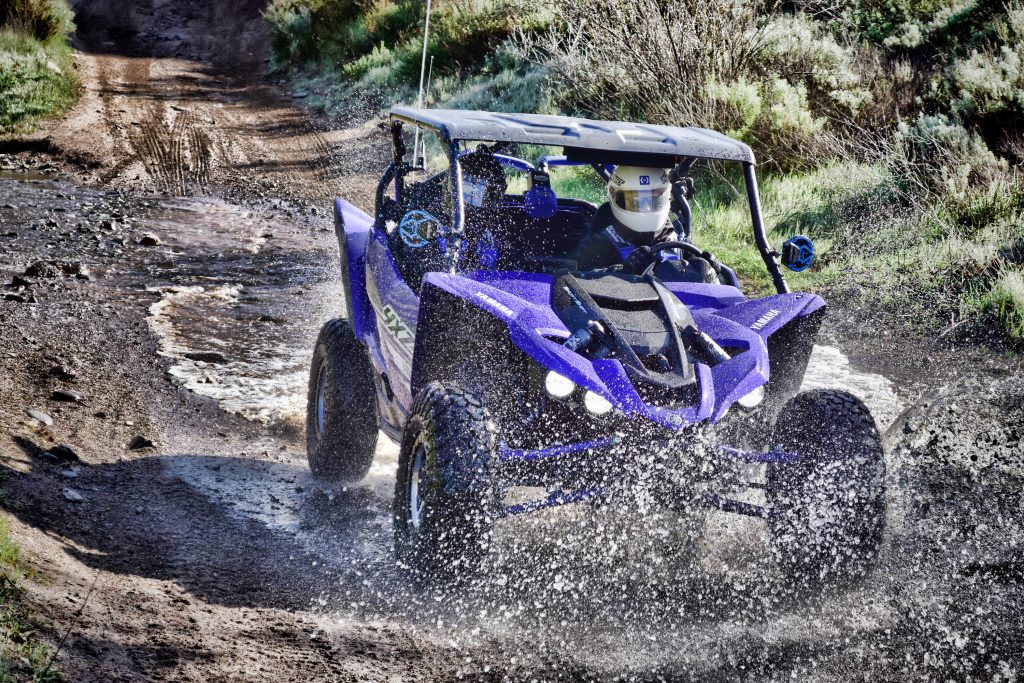
The YXZ’s sporty-looking fenders don’t do a great job of keeping water and mud off of its occupants, but then again, what’s the point of being outdoors if you don’t plan on getting dirty?
While the YXZ trumps the Talon in high-speed stability and ride quality over really nasty terrain, it bows to the Honda in slow-speed crawling. With a real low-range gearset, the Talon will out-crawl the YXZ any day of the week. If rock crawling is your game, don’t go after a Yamaha unless you plan on investing in a lower gear set (which is available through dealers and the aftermarket). The Honda’s throttle response and clutch engagement is savage at low speeds, so a careful throttle foot is necessary. However, the Honda’s i-4WD system works incredibly well by distributing brake pressure to whatever wheel the ECU thinks needs traction. The system works flawlessly, and it will climb just about anything.
FUN FACTOR AND THE FINAL SAY
This is always the worst part about these stories- we have to come up with a winner. Quite honestly, either machine will get you over rough terrain in a hurry, comfortably, with a big-ol’ smile smeared across your face. The Yamaha is better suited for high-speed open terrain such as the desert and sand dunes, and it will turn inside of the Honda at nearly every corner entrance. Truth be told, the Talon 1000X is closer to the YXZ in close to handling feel. The YXZ also comes with factory forged internals for 2019 that make adding power a breeze. Turbo kits are starting to trickle out for the Honda, showing massive gains in horsepower on low boost.
From a sheer standpoint of fun behind the wheel, we have to go with the YXZ. It’s an extremely close race and comes down to two things: the YXZ’s intoxicating engine and its steering precision. The Talon earns big points for its technology package and magic transmission, but it wasn’t enough to edge out the wild YXZ. In the end, the Yamaha won this head to head by just a hair- even more impressive for the Talon considering it is in its very first model year! We can’t wait to see what’s in store for both machines, including the Talon’s upcoming launch control and Fox Live Valve features for next year’s model. Honda is also releasing a 4 seat Talon, while Yamaha still hasn’t announced a two-row variant of their sport machine.

